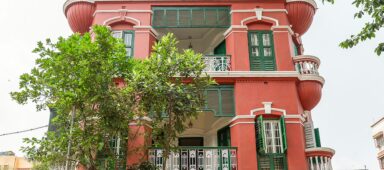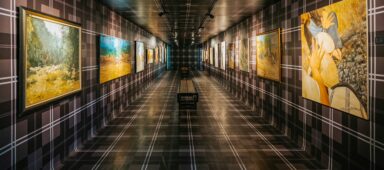Uncover Melbourne’s love affair with all things art and creative
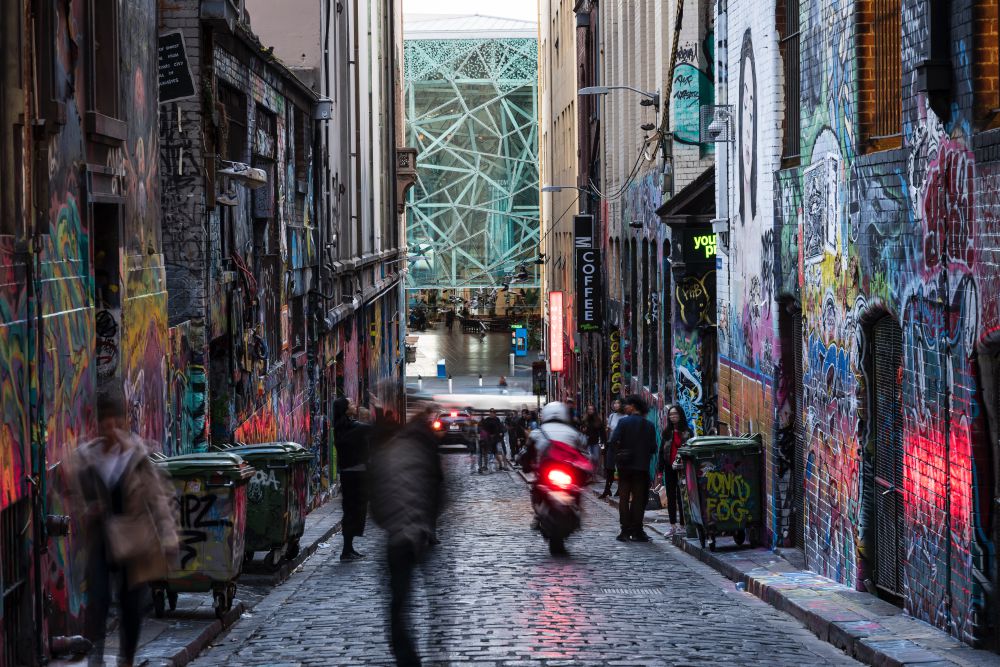
Regularly listed as one of the world’s most liveable places, Melbourne is a treasure trove of arts and culture. The city’s calendar is filled with creative events throughout the year, be it in theatre, music or the performing arts, and the cityscape is dotted with museums, galleries, as well as art installations and colourful murals at every corner. For Melburnians, these are part and parcel of everyday life – but tourists are increasingly flocking to the city to experience it for themselves.
1. Watch Harry Potter And The Cursed Child
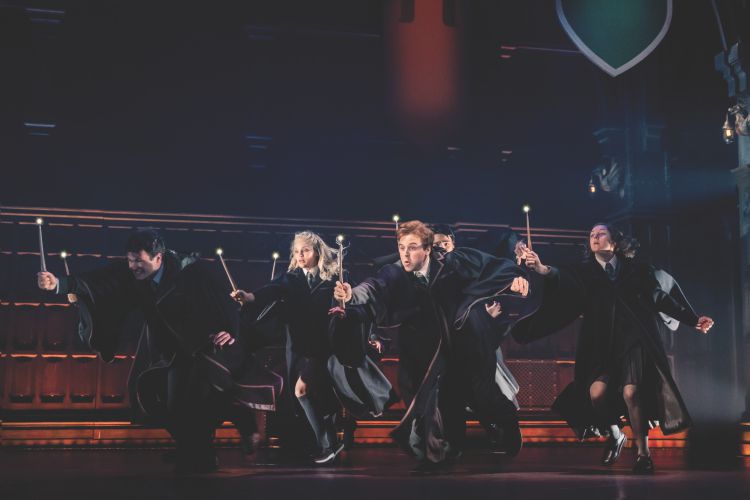
2019 has been an exciting year for Australian fans of Harry Potter, as the critically acclaimed Harry Potter and the Cursed Child play made its debut in Melbourne in February, taking up a two-year residency at the historical Princess Theatre.
The eighth instalment in the series, it is based on an original new story by J.K. Rowling, Jack Thorne and John Tiffany. The play is shown in two parts, each lasting about three hours, and is meant to be seen in order on the same day (a matinee and an evening show) or on two consecutive evenings. The Australian production includes a crew of 70 and cast of 42, comprising new and veteran actors from Australia and New Zealand.
The Cursed Child continues the story of Harry Potter, who is now an overworked employee of the Ministry of Magic, and a husband and father to three school-age children. While he grapples with a past that refuses to stay where it belongs, his youngest son Albus must struggle with the weight of a family legacy he never wanted. As past and present fuse ominously, both father and son learn the uncomfortable truth: that sometimes, darkness comes from unexpected places.
True to the fantastical world of Harry Potter, the play is a magical experience from start to finish, perfectly capturing the imagination and wonder that makes Harry Potter such a global phenomenon.
Through the clever use of lights, smoke, props and the overall stage, even the most sceptical adult will lean forward and wonder how wands light up in the darkness and brooms ‘soar’ into the air, or how actors appear and disappear from the stage as if by magic. Set pieces are marvellously grand and intricate, such as a scene involving a ‘moving’ train that will have audiences glued to the edge of their seats.
2. Visit its laneways
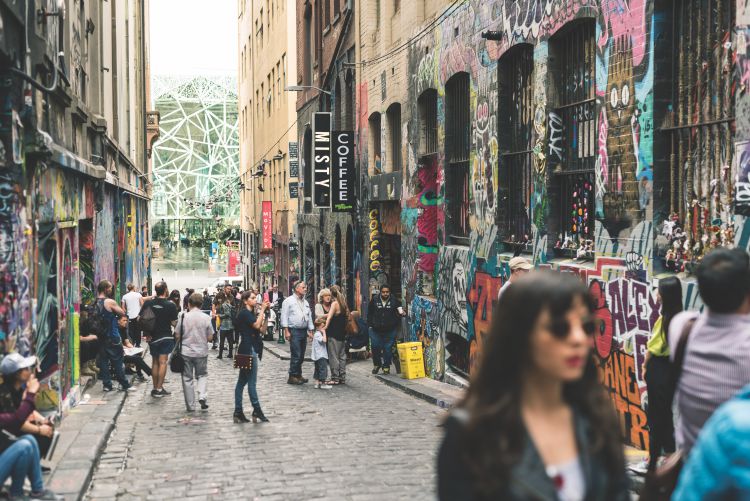
Like its trams, Melbourne’s laneways are an iconic part of the city’s culture and identity, many of them dating back to the Victorian era. Originally used for horses and carts, they were born out of practicality, as a population boom in the 19th century led to a need for an easier way to access buildings and cut across to other parts of the city. As time went on, the laneways developed a seedy reputation as slums, where crime, homelessness and prostitution ran rampant.
In the 1990s, thanks to efforts by the local government and heritage organisations, the laneways were cleaned up, attracting businesses and residents back to the area. Today, a laneway address is highly coveted. Their secluded locations, often tucked away from the main thoroughfare, have also added to their charm. You never know what you might stumble across while exploring the narrow paths, be it clothing boutiques, artisan shops, art galleries, hole-in-the-wall cafés or hidden bars.
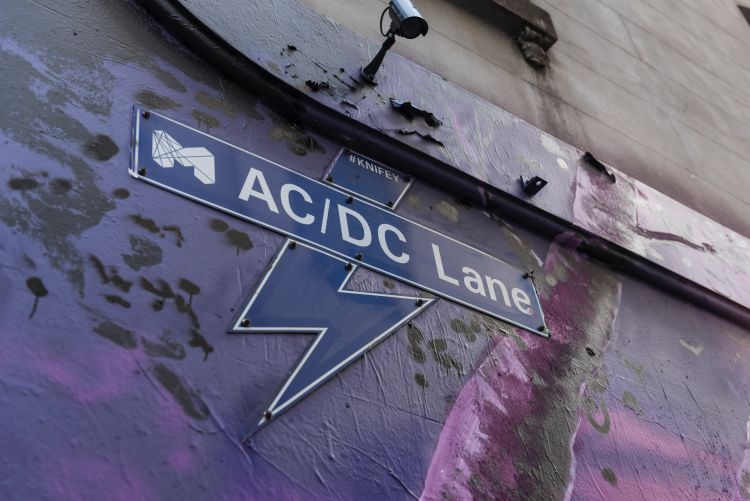
Perhaps the best-known laneway is AC/DC Lane, named after the biggest name in rock to come out of Australia. The street is a tribute to these musical icons, with the brick walls of the adjacent buildings papered over with band announcements and show posters, alongside music-themed murals and graffiti. This is also where visitors will find Cherry Bar, one of the first establishments in the area to have kickstarted the laneway lifestyle, and a beloved venue for rock n’ roll acts since the 1990s.
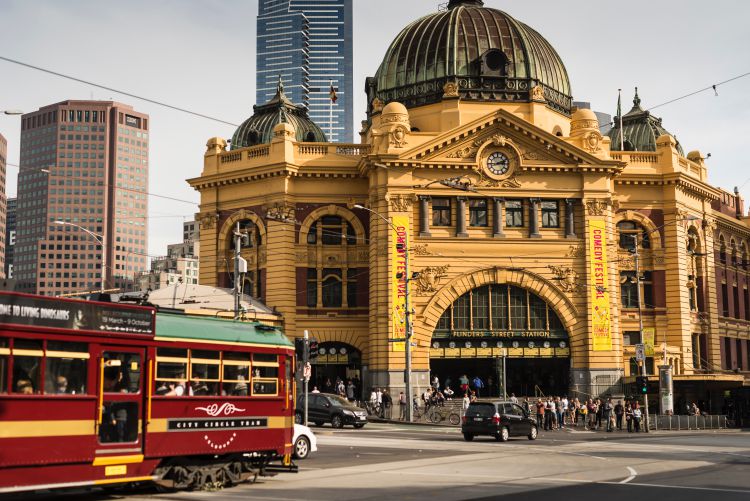
Another popular laneway to visit is Hosier Lane. Credited for popularising Melbourne’s street art across the globe, it is a dazzling and colourful showcase of stencils, murals and installations from local and international artists alike. On your way there, stop for photos at Flinders Street Station, a grand-looking Art Nouveau-style building and the central point of Melbourne’s rail system since 1854. Locals might tell you to ‘meet under the clocks’, referring to the row of clocks that sit above the main steps of the station.

Inseparable from the laneways are the shopping arcades, essentially early forms of shopping centres that have endured to this day. Block Arcade is Melbourne’s most historical and posh arcade. Spectacularly grand in appearance, it contains an array of the city’s most exclusive retailers, offering fashion as well as jewellery and giftware, leather goods, handmade toys, shoes and cosmetics. Visitors can also drop by the Royal Arcade, Melbourne’s oldest, which features Gog and Magog – two folklore giants of ancient Britain – who strike the time each hour.
3. Visit Australia’s oldest and largest museum
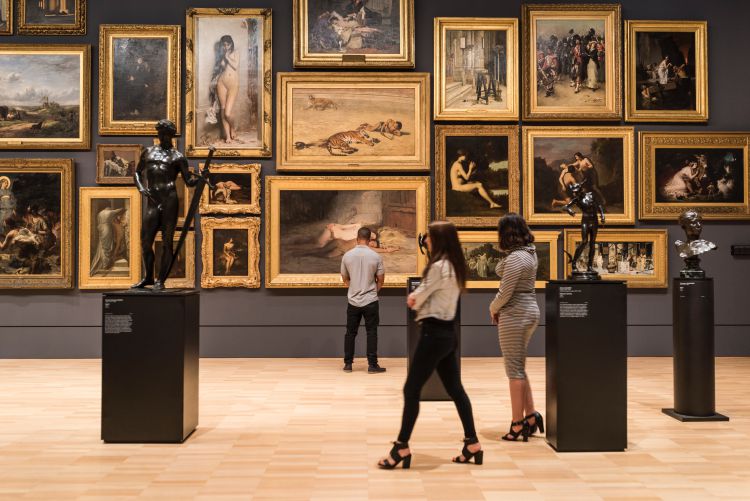
Located along St Kilda’s Road in Melbourne’s Southbank neighbourhood, the National Gallery of Victoria (NGV) is Australia’s oldest, largest and most visited museum, receiving 3.3 million visitors from 2017 to 2018.
The building itself is a work of art, with a cascading water wall that greets visitors at the entrance. Step into the cavernous central atrium, where rotating artworks are displayed, before entering the Great Hall to find the world’s largest stained-glass piece, by Australian artist Leonard French.
There are four floors at NGV, featuring over 75,000 works of art that include European, Asian, Oceanic and American art. The collection is diverse, spanning paintings and photography to drawings, textiles, sculptures, antiquities and modern artwork.
Some of the gallery’s most famous pieces include an early cast of Rodin’s The Thinker, Picasso’s Weeping Woman, as well as works by European greats such as Rembrandt and Monet.
It’s not just a place for art aficionados. There are free guided tours – great for first-timers – as well as programmes such as NGV Kids and NGV Teens, with exhibitions and activities geared towards families and young art enthusiasts.
There is also a sizeable shop on the ground floor, which carries souvenirs, art and design books and catalogues, in addition to accessories and jewellery by local artisans. Entry is free, but special exhibitions may require a fee.
4. Experience The Lyon Housemuseum
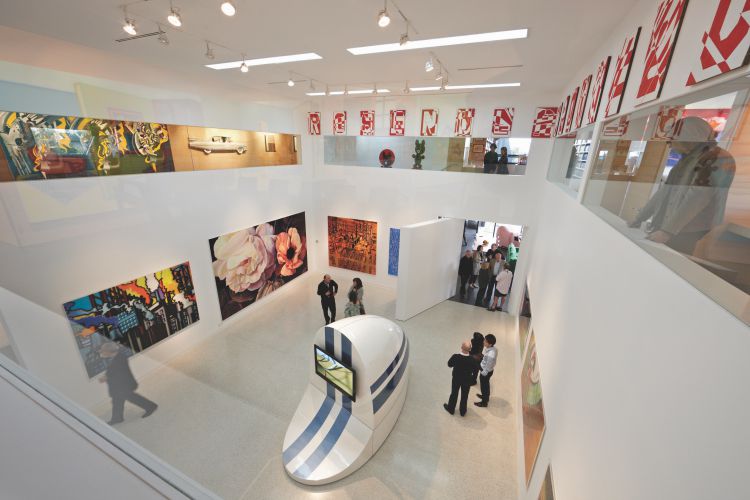
Tucked within a quiet suburb along Cotham Road is the Lyon Housemuseum, a unique building that blurs the line between the public and the private. At once an art gallery and a home, it was designed by architect Corbett Lyon, where he resides with wife Yueji and daughters Jaqlin and Carlin.
The Lyons have been avid art collectors since the 1990s, and currently own one of the largest private collections of contemporary Australian art, with over 300 works representing more than 60 emerging and established local artists.
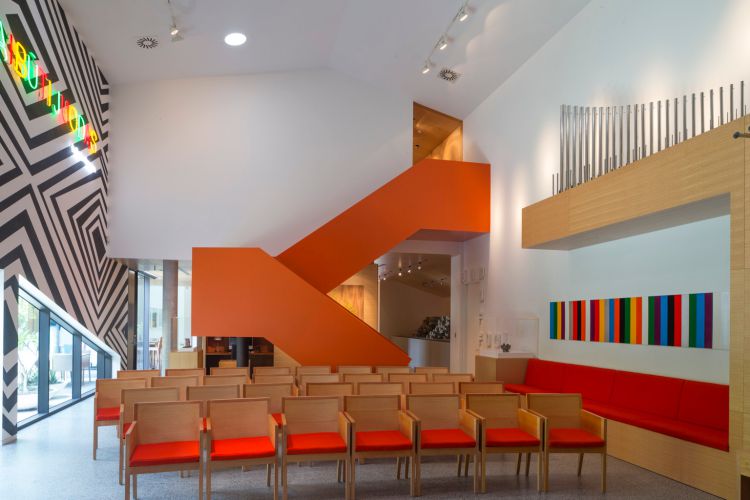
The idea for the Housemuseum came up in the mid-2000s when the family was looking into a new home. It was inspired by the private art collections housed and displayed in residential settings such as the Sir John Soane’s Museum in London and the Peggy Guggenheim Collection in Venice.
“We wanted a space that would be able to house both the collection and the family, and at the same time, share our passion for art with others,” says Yueji. As she takes us on a tour of the building, she explains the significance and meaning behind select pieces – but also peppers her narrative with interesting stories and anecdotes of family life.
Greeting visitors at the living room are two adorable trucks by Patricia Piccinini – one in pink, the other in blue – both popular with the couple’s daughters when they were young.
Looking up at the ceiling, one sees a literal wall of text clad in timber veneered panels, comprising over 35,000 words in printed small text that come together to spell out ‘ART’. Yueji describes this to be like a ‘family diary or journal’, documenting the family’s story. If you look closely, you will find the names of artists and philosophers, places the family has visited, the names of the girls’ best friends, and even text in Chinese, Yueji’s first language.
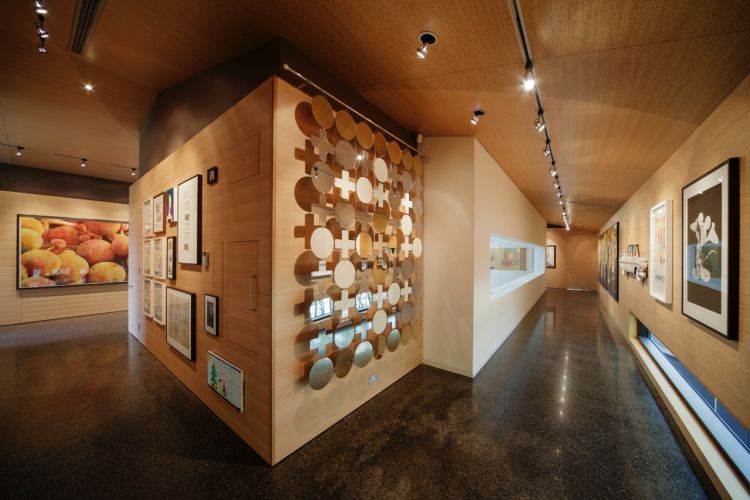
Next to the kitchen is the White Cube, a large central space featuring rotating exhibitions, while at the back of the house is the Black Cube, a dark and cavernous room which showcases video art. Coming to the Music Room, there’s a towering hybrid pipe organ designed by Corbett himself, which he will play if he is hosting the tour. Visitors may explore most parts of the house, but closed doors, framed photographs and trinkets curated from the family’s travels are reminders that this is as much a private home as it is a place to showcase art.
The Lyon Housemuseum is open for pre-booked tours on designated days each year, but visitors who’d like to view parts of the extensive collection that are not on display in the home can also visit the adjacent Housemuseum Galleries. Essentially an extension of the original Housemuseum, the modern gallery is open to the public six days a week and is designed for large-scale contemporary art works and installations.

